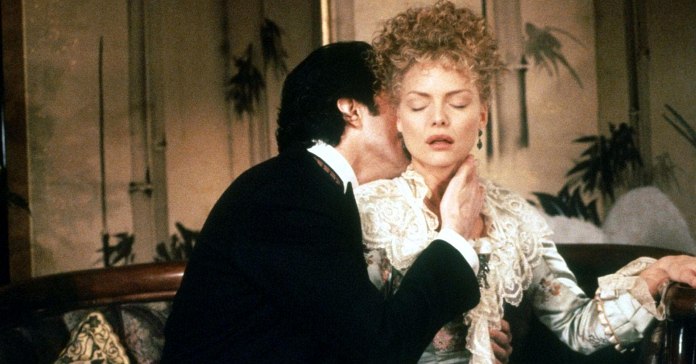
Movie romances often transport us to magical realms, where love triumphs over all odds. Whether it’s surviving a mammoth iceberg or encountering a mischievous spirit, these tales immortalize the power of love and provide a truly satisfying escape.
But wait, there’s more to the story! Sometimes, filmmakers slyly play with our emotions by keeping the lovebirds apart, not because of tragic events, but for other juicy reasons. Let’s take a peek at the timeless classic Casablanca, where our hero Rick selflessly puts his own happiness on hold for a greater cause. Similarly, in captivating films like The Umbrellas of Cherbourg and Portrait of a Lady on Fire, the couple’s love is thwarted by the harsh realities of the outside world. These narratives remind us that love doesn’t always follow a predictable path or last forever. Yet, they still manage to convey its profound significance and irresistible charm in ways that will leave you utterly captivated and unable to forget.
1. Casablanca

Love in the time of war has always been a popular theme for tearjerker movies, and Casablanca is no exception. This timeless film takes place in French-occupied Morocco during World War II and revolves around the character of Rick, an American running a popular nightclub who doesn’t pledge allegiance to anyone but himself. However, his world is turned upside down when his former flame, Ilsa, reappears. Played by the captivating Ingrid Bergman, Ilsa’s presence disrupts Rick’s carefully cultivated ambivalence. She is now married to a celebrated member of the French Resistance and is seeking letters that will allow them to escape the clutches of the Nazi-occupied territory. Rick is faced with a critical decision: should he follow his heart and run away with Ilsa, or take a stand and help them escape for the greater good of the war effort?
The moment when Rick and Ilsa lock eyes for the first time since their passionate romance in Paris years ago is filled with astonishment, pain, and an undeniable connection. This single glance speaks volumes, conveying a depth of emotion that no amount of dialogue or flashback could capture as profoundly. Their love for each other still burns brightly, and many films would have allowed them to ride off into the sunset together. However, Casablanca’s message is about the transformative power of love, urging individuals to rise above their selfish instincts rather than surrendering to them. As Rick reconnects with Ilsa and realizes that she has always loved him, he finally breaks free from his own self-preservation and takes a dangerous risk to save her, ultimately boosting the Allies’ chances of winning the war.
2. Roman Holiday

William Wyler’s classic 1953 romance stars Gregory Peck as Joe Bradley, a cynical journalist living in Italy who falls in love with Princess Ann (Audrey Hepburn), a sheltered heir to the throne of an unnamed European country. The story kicks off when the princess escapes from her royal handlers in Rome, seeking a taste of freedom. However, she ends up dozing off on a park bench due to the sleeping pills her doctor prescribed. That’s where Joe stumbles upon her, assuming she’s just a local, and takes her home to sleep off the effects.
Upon discovering the princess’s true identity in a photograph, Joe realizes he has stumbled upon the scoop of a lifetime. He offers to show her around Rome, and together they embark on a whirlwind adventure through the vibrant streets of the city. Ann, going by the name “Anya,” shaves off her hair, hops on a Vespa, and indulges in ice cream while surrounded by joyous tourists. As they spend more time together, a deep connection forms between them. Ann’s infectious enthusiasm for life’s simple pleasures gradually chips away at Joe’s cynicism, while he charms her with his dry wit and lack of deference.
However, their idyllic escapade is short-lived when government agents catch up with Ann. Although they manage to escape, they both understand that they must say goodbye. Ann resumes her royal duties, and Joe returns to his journalistic pursuits, ultimately deciding against publishing his intended tell-all expose. In the final scene, they reunite during a press conference. Ann has embraced her regal responsibilities, exuding a newfound grace, while Joe appears respectful and introspective. Their story doesn’t conclude with a fairytale ending, but the experience has fundamentally transformed both of them.
3. Gone with the Wind

Gone With the Wind is an epic love story that delves into themes of war, slavery, betrayal, and tragedy. Rather than portraying an idealized romance, it serves as a cautionary tale. Scarlett O’Hara, played by Vivien Leigh, is an enchantingly beautiful yet spoiled daughter of a Southern plantation owner. She becomes entangled in a passionate relationship with the charming and morally questionable Rhett Butler, portrayed by Clark Gable. In many ways, they are a perfect match – both flawed individuals. Scarlett is self-centered, manipulative, and lacks empathy, while Rhett is a serial philanderer driven solely by personal gain. Their initial encounter reveals their shared nonconformity to traditional societal norms, with Rhett confessing that he is “no gentleman,” just as Scarlett is “no lady.”
As the war unfolds, Scarlett’s family loses their plantation, plunging them into dire circumstances. Meanwhile, Rhett prospers financially as a smuggler. He admires Scarlett’s resilience in the face of destitution, but their romance becomes strained even before they officially become a couple. Scarlett rejects his advances for years, instead pursuing another man who remains out of her reach. By disregarding the fact that Rhett is the right person for her all along, she forfeits the chance to have a happy and uncomplicated life with him. It is only when she finally realizes that he is the one she has truly loved all along that their relationship has already caused irreparable damage to those around them. Exhausted and bitter, Rhett decides to leave Scarlett, searching for remnants of “charm and grace” elsewhere in the world.
4. The Remains of the Day
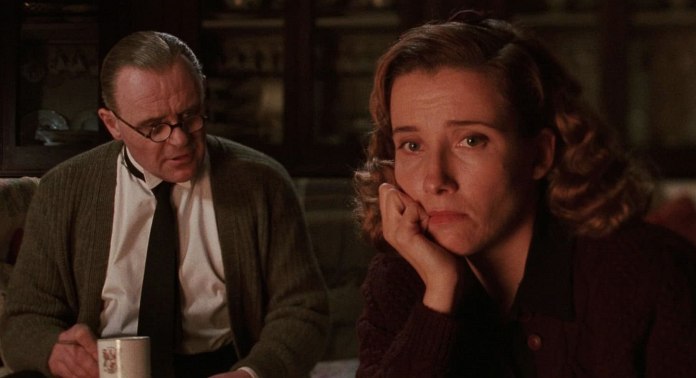
Adapted from Kazuo Ishiguro’s novel of the same name, The Remains of the Day tells the story of a near-romance in pre-World War II England. The film follows the journey of Stevens, a repressed butler portrayed by Anthony Hopkins, and Miss Kenton, a young housekeeper played by Emma Thompson. Stevens firmly believes that serving his employer is the ultimate purpose in life. He meticulously arranges silverware and maintains strict discipline in the manor, ensuring that every staff member fulfills their duties with military precision. Miss Kenton acknowledges his professionalism but suspects there is more to Stevens than his devotion to service.
Gradually, Miss Kenton begins to chip away at Stevens’ facade of stoicism, much to his discomfort. In a particularly revealing scene, she discovers him reading a novel in his room. In the dim light, she approaches him until their bodies touch. Stevens remains motionless, either frozen by his own embarrassment at the romantic nature of the book or unable to move due to his internal struggle. This moment confirms Miss Kenton’s suspicions that there is an inner life beneath Stevens’ rigid exterior.
Anthony Hopkins masterfully portrays Stevens, conveying a range of emotions through his expressive eyes while maintaining an unwavering sense of order and discipline. In contrast, Emma Thompson’s Miss Kenton is playful and expressive, consistently attempting to coax Stevens out of his professional shell. Despite his attempts to hide his interest, Stevens subtly watches her through windows and keyholes. In a poignant admission, he tells her, “You mean a great deal to this house,” revealing both his deep affection for her and the extent to which his identity is intertwined with his career. However, it is this very inflexibility that prevents their relationship from blossoming. Eventually, Miss Kenton marries another staff member and leaves the manor.
5. Brief Encounter
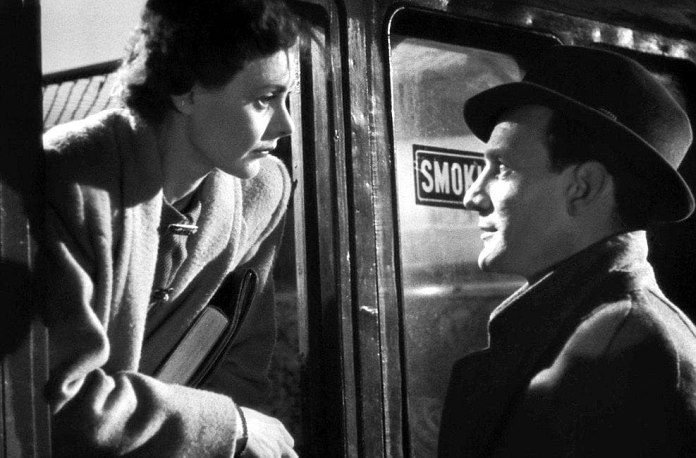
David Lean, known for his grandiose films like Lawrence of Arabia and Doctor Zhivago, also directed a more intimate and powerful black-and-white romance. Laura, a middle-class housewife, and Alec, a young doctor, meet by chance at a train station and instantly connect. Despite being married with families, their friendship quickly turns into something more. However, when their affair is discovered, they realize the risks involved and decide to end it.
Their final goodbye, in the very place where their story began, is interrupted by one of Laura’s friends. They part ways discreetly, unable to express their true feelings for each other one last time. In Brief Encounter, there are no clear villains or easy choices. Both Alec and Laura deeply love their spouses and want to remain loyal to them. Yet, they find themselves unable to resist the intensity of their romance.
Laura, in a voiceover, describes the affair as anything but exhilarating or desirable. She confesses, as an ordinary woman, to have unexpectedly fallen in love. It is a revelation that violent emotions can strike even the most average individuals.
6. The Way We Were
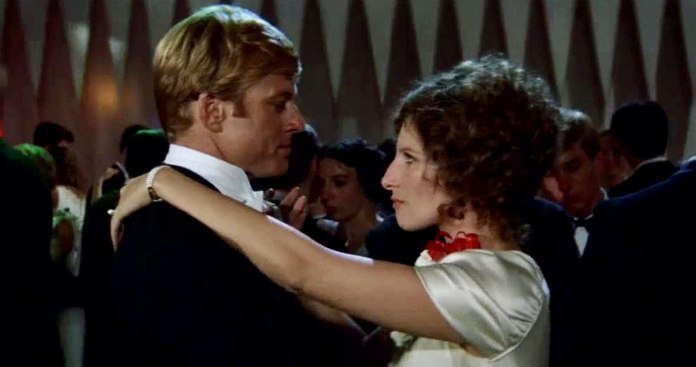
Set during a tumultuous few decades in American history, The Way We Were is a love story that seems doomed from the start. Barbara Streisand plays Katie, a passionate Marxist student leader in the mid-1930s who shares a flirtation with one of her college classmates. Hubbell (Robert Redford) is an easygoing star athlete with effortless charm and an unexpected skill for creative writing. He admires her passionate adherence to justice, and she falls for his good looks and skill as a writer.
They reconnect after the war when Hubbell is trying to put his military service behind him and Katie is more fervently political than ever. While their goals are at odds, the spark is still there. She sees creative potential in him that thrills her, and he is captivated by her honesty, intelligence, and belief in his dreams. Their romance leads to marriage, but not happiness.
Katie accuses Hubbell of selling out when he becomes a successful Hollywood screenwriter, and he cringes at her stridency and inability to make light of serious issues. When the McCarthy Blacklist sweeps through the film industry, her Marxist past is the death knell to their marriage.
The Way We Were affirms the saying that opposites attract, but presents a realistic scenario of what happens next. Katie and Hubbell are hopelessly mismatched from the start, and their genuine love and admiration can’t compensate for it. When they meet again, years later, they can barely conjure enough familiarity to discuss their own daughter.
7. The Age of Innocence
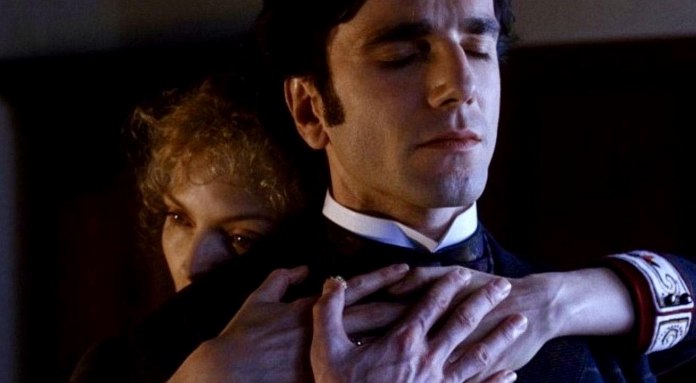
In the movie “The Age of Innocence” directed by Martin Scorsese, the upper class of New York in the 1870s is portrayed as just as savage as the criminal underworld of the 1970s. The story revolves around the intense desire between Newland Archer, played by Daniel Day-Lewis, a respected lawyer, and Countess Olenska, played by Michelle Pfeiffer, a free-spirited divorcée. Newland is engaged to a well-mannered socialite named May, portrayed by Winona Ryder, who perfectly fits his social standing.
However, Newland’s complacent outlook on life is challenged when he gets to know Countess Olenska, his cousin who had married a European nobleman and later returned to New York after their separation. She is seen as scandalous and dangerously independent by her former social circle, becoming a subject of both fascination and ostracism. Newland, with his restrained demeanor, is drawn to her independent nature. They fall deeply in love, but in a society where every gesture and word is analyzed for hidden meanings, they must conceal their feelings to avoid social ruin.
Despite the setup, the movie is far from unromantic. Every interaction between Newland and the Countess is filled with repressed desires, creating an electric atmosphere. There is a particularly sensual scene where Newland unbuttons the Countess’s glove and kisses her wrist, which is so erotic that it would warrant an R-rating. While Newland daydreams about running away with the Countess, she remains more realistic about their circumstances, ensuring that their affair does not progress any further. Even though their love is never physically consummated, it is portrayed as one of the most passionate and seductive on-screen romances.
8. Once

Set in the chilly streets of Dublin, Once is John Carney’s indie breakthrough that explores the profound connections formed through the power of music. With Glen Hansard playing a vacuum repairman and Markéta Irglová as a Czech immigrant, the film delves into their unexpected friendship and collaboration.
Shot with a handheld camera and featuring first-time actors, Once takes on a documentary-like feel rather than a traditional fictional narrative. Hansard and Irglová, both talented musicians in real life, skillfully convey their characters’ emotions through music rather than dialogue. The live recordings of their songs capture an intimate essence, showcasing the growing familiarity and trust between them.
Unlike typical musicals, Once is not a mere escape into a romantic tale. The story takes a realistic turn when Hansard discovers that Irglová has a husband back in the Czech Republic who will soon join her in Dublin. Despite this, she encourages him to pursue his musical dreams in London by leaving his day job. Their blossoming romance may be short-lived, lasting only a week, but the depth of their connection is undeniable.
In a poignant moment, Hansard asks Irglová if she loves her husband, to which she responds in Czech, “Miluji tebe,” meaning “I love you.” Though not translated, the language of their music makes it clear that they understand each other on a profound level. The emotional impact of their songs is so powerful that Hansard and Irglová even won an Oscar for Best Original Song.
9. In the Mood for Love

Set in 1960s Hong Kong, Wong Kar-wai’s “In The Mood for Love” tells the tale of a couple who find themselves consumed by their forbidden attraction. Chow Mo-wan (played by Tony Leung) and Su Li-zhen (played by Maggie Cheung) meet in the midst of their spouses’ affair, seeking solace in each other’s presence. As they navigate their shared experience, they discover a profound connection that surpasses their unfortunate circumstances. Despite the betrayal they have suffered, they resist succumbing to their feelings and perpetuating the pain inflicted upon them. Their unwavering integrity leads them to gaze longingly at each other from afar, unable to confess their love.
In a poignant scene, Chow confides in a friend, reminiscing about a time when secrets were whispered into tree hollows to ensure their privacy. The film’s final sequence takes us to Cambodia, where Chow visits a temple and whispers something into a hole in the wall, sealing it with clay. “In The Mood for Love” portrays a love story that unfolds through the enchantment of music and vibrant colors, rather than overt actions. Chow and Su never find the courage to express their love to one another, yet the rain-soaked streets, evocative melodies, and visual splendor convey the underlying romance with vivid and haunting beauty.
10. Portrait of a Lady on Fire

Celíne Sciamma’s breathtaking film, Portrait of a Lady on Fire, transports us to a rugged and secluded island off the coast of Brittany in the 1770s. The story revolves around Marianne (Noémie Merlant), a talented artist who is commissioned to paint the portrait of Héloïse (Adèle Haenel), a wealthy heiress. Héloïse, however, resents the upcoming arranged marriage she is being forced into and refuses to have her portrait painted. To overcome this, Marianne is instructed by Héloïse’s mother to pose as her companion during the day and secretly paint her at night. As the two women find themselves alone on the island, they begin to observe each other closely, with Marianne meticulously studying Héloïse’s every movement and emotion. Little does Marianne know that she herself is being observed just as intently by Héloïse. Over time, their observations become more personal, leading to an intimacy and comfort that the outside world, dominated by men, cannot provide.
Céline Sciamma has described Portrait of a Lady on Fire as her manifesto on the female gaze. Critics have recognized the film’s groundbreaking portrayal of femininity and romantic passion, but they also appreciate its ability to transcend the boundaries of this cinematic exploration. The movie captures the paradox of two individuals who find solace and excitement in each other’s presence. Their romance is confined to the duration of the portrait’s creation, yet their unbreakable connection is forever immortalized in the artwork. Even years after their separation, the painting serves as a powerful reminder of the profound bond they shared and the sacrifices they were forced to make.